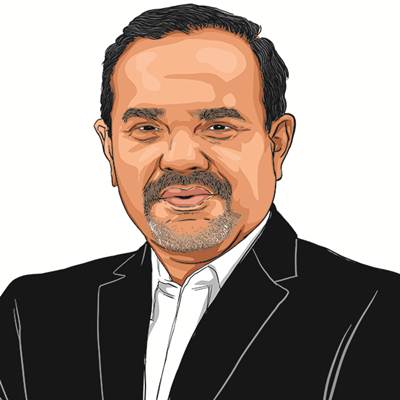Opinion US pressure is a test for India as a rising power. To withstand it, build strength
The most pragmatic approach is to weather the storm: Intensify lobbying efforts, engage key Republicans and most importantly, implement economic and social reforms at home to attract global investment
 The Trump administration appears to have little appreciation for Indian sensitivities, discarding the major initiatives of its predecessors that sought to accommodate India as a rising power of strategic value to Washington.
The Trump administration appears to have little appreciation for Indian sensitivities, discarding the major initiatives of its predecessors that sought to accommodate India as a rising power of strategic value to Washington. US President Donald Trump’s recent decision to impose a 50 per cent tariff on Indian goods and to reestablish strategic parity between India and Pakistan poses significant challenges to Indian foreign policy. The situation is reminiscent of the aftermath of the nuclear tests in 1998. These regressive American actions may create serious obstacles to India’s aspirations of becoming a major power in the short and medium terms. Yet, they may also present an opportunity for India to pursue a more assertive and confident foreign policy posture.
The Trump administration appears to have little appreciation for Indian sensitivities, discarding the major initiatives of its predecessors that sought to accommodate India as a rising power of strategic value to Washington. India’s pursuit of strategic autonomy is rooted in its ambition to become a great power in the 21st century through a hedging strategy aimed at achieving peaceful recognition of its status. By treating India as it has treated other trading partners — pushing them into corners in the hope they will yield — the United States risks undermining a crucial partner.
It is important to recognise that such challenges are common for rising powers, which are often tested at different stages of their ascent. Established powers have strong incentives to contain emerging rivals before they become peer competitors, unless they serve a useful balancing function. Historically, rising powers often had to wage wars and endure significant hardships to achieve their strategic goals. In today’s era, a peaceful rise is possible, but the process is rarely smooth. A great power must be able both to withstand pressure and, when necessary, to exert it on others.
The restoration of status parity between India and Pakistan has immediate regional consequences. Pakistan’s elite has a history of drawing misguided lessons from past conflicts. Believing in fleeting opportunities, it has launched provocations — as in 1965 and during the Kargil conflict — under the false assumption that American and Chinese support would follow. In 1965, US-supplied offensive weapons encouraged Pakistan’s belief in its military superiority, spurring a disastrous miscalculation. Today, Field Marshal Asim Munir may similarly be tempted to pursue provocative actions, convinced that Chinese weaponry and perceived backing from both Washington and Beijing tilt the balance in Pakistan’s favour.
For India, heightened conflict with Pakistan and China carries another cost: Constraints on military spending. With active threats on two borders, India’s ability to expand its naval power may suffer, delaying its ambitions to develop a true blue-water navy.
In the short term, US “status games” will hurt India. But great powers must be able to absorb pain while also imposing costs on others. To do so, India must continue strengthening its economy so that, like China, it becomes capable of leveraging economic interdependence to influence global actors.
Meanwhile, India should intensify its outreach to American policymakers, employing lobbyists and cultivating influencers to reshape the narrative in Washington. It must emphasise the risks for the US of alienating India, particularly the possibility of driving it closer to a China-Russia partnership. India should also generate innovative proposals with BRICS partners and within other forums such as the G20, while accelerating trade negotiations with a wider range of states.
At the same time, India must recognise that Trump’s agenda of restoring American primacy will bring additional pressures not just on India but also on BRICS partners and US allies alike. New Delhi’s multi-alignment strategy should, therefore, be recalibrated to make BRICS more effective, beyond its current role as a talking shop. Gradual but deliberate efforts should also be made to expand the role of non-dollar currencies in global trade and finance, including the Indian rupee.
India is not alone in this predicament. US allies such as Canada are also grappling with Trump’s realpolitik-driven pursuit of an imperial-style global order. Even if India were to accommodate Trump’s demands, it would still struggle to appease him fully given his mercurial style. The most pragmatic approach, therefore, is to weather the storm: Intensify lobbying efforts in Washington, engage with key Republicans who may influence the administration, and, most importantly, implement economic and social reforms at home to attract global investment.
As I argue in my recent book, The Unfinished Quest: India’s Search for Major Power Status from Nehru to Modi, Indian foreign policy has withstood decades of US pressure, often aimed at confining it to a purely regional role. Yet, the US has also, at times, accepted an assertive India. It is possible that a future administration in Washington will again adopt a more accommodating stance. To ensure it can withstand current pressures, however, India must use this moment to build domestic strength and emerge as a truly indispensable global player.
The writer is Distinguished James McGill Professor in the Department of Political Science at McGill University, Canada, and author of The Unfinished Quest: India’s Search for Major Power Status from Nehru to Modi






